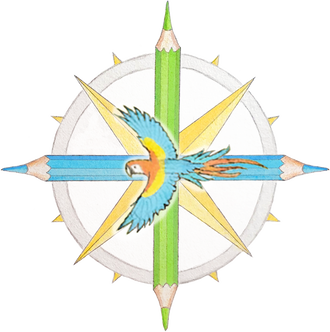|
It has been a long time coming, but The North American Continent is at the finish line. I'm now deciding how to print it. So, where's it all at? "...but I preferred reading the American landscape as we went along. Every bump, rise, and stretch in it mystified my longing." It started on a refrigerator in Montréal six years ago. For two years prior I explored the US and Canada, and a childhood love of maps was ignited to a point of no return. Geography came alive. My world was expanded as I experienced the continent of North America, a 21 year-old from an island country. New Zealand is beautiful, majestic. It is diverse and it is not small. But a continent is a continent. Found myself living in Montreal, and it's late 2012. As the Fall progressed and the city went inside, I went inside too. My time was almost up after 2 years on this continent, and I couldn't stop thinking about the long skies. This great rolling land I'd gotten lost in, with all its mountains, deserts, plains and cities. A geographic theatre laid out like a masterpiece of heavenly proportions. So I drew North America on a fridge. Well, most of it. And the western spine of South America. And an inset map of New Zealand, because... why not?
The fridge was not this map. But I never turned back. It's 2013 and I've settled in Australia. Perth was home now, and I immediately started work on a new map. No more household appliances, this time it'd be on paper. I'd learn to use colour pencils. I'd put in some serious hours. I spent 6 months drawing South Asia & Australasia. Paying the bills as a cook in Fremantle, I set the map up in my bedroom and just... got after it. It took up most of my free time, but I loved the process. And once I finished I actually had some skills. It's 2014. I've moved to Melbourne, and I'm ready to revisit the North American continent.
Finished all the land in May 2017, three years after starting. I felt sure the project was almost done. But the map got much more complex when I started fixing up the earliest-drawn content... Putting thousands of hours into one hand-drawn map led to vast inconsistencies, due to technical improvement that is inevitable after all that practice. I had gotten so much better that a large swathe of the early map needed to be “touched up”... as I called it at the time. Some minor fixes, lift a few faded colours, add a bit more content. But as I took my pencils and eraser down the west coast, this term "touch-up" became hilarious. The touch-ups were instantly a full-blown re-draw of a vast portion of the map. I had to work around so much old pen content (cities, rivers, borders, labels) that I developed a technique to scratch pen off with a scalpel. This allowed me to re-do any city that was not good enough. I scratched off and re-drew almost 100 cities. (More on this process in my video presentation, Methods of a Hand-Drawn Map). By the time I was done with the re-draw, I’d transformed the western half of the USA, and about a third of Canada. And… it was July 2018. 14 months after I began the “touch-ups”.
Meanwhile, I decided to include an inset map of Hawaii in the Pacific, to complete all 50 United States. While geographically it is not part of the North American continent, its role as a US state made it an easy choice to include.
And one final important thing. I have been so moved by all of you following my progress during the four years of this maps creation. The support, the feedback, the passion, the enthusiasm for this style of geographic art... it is amazing. I feel so blessed to have people interested in this work. Thank-you to all of you who follow it, whether on social media, in person, email... all of it. I always love to hear your feedback and ideas - many of which have influenced the map over the years. Okay, onto finishing the map! 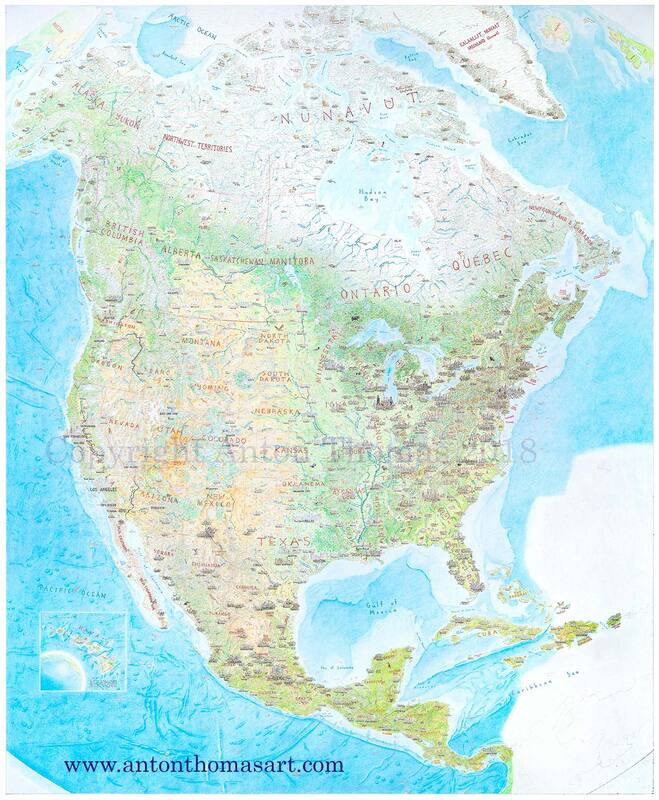 The full map, as of September 2018. All that remains is the Southeast corner (northern coast of South America, it will be without illustrated content, same as Iceland/UK and Siberia), the deepwater bathymetry and sea creatures of the Atlantic, and the title/key design which will sit in the mid-Atlantic.
2 Comments
Sue Smales
9/30/2018 09:01:18 pm
Very interesting Anton. So looking forward to the finished product and having it on my wall.
Reply
JOHN MULLER
9/30/2018 09:06:02 pm
Nice to see some closeups. Very educational. I never realised how close Jamaica was to Cuba and to Haiti; the different cultures of the English, French and Spanish mingling with African and local Carib influences are so amazing.
Reply
Your comment will be posted after it is approved.
Leave a Reply. |
Interested in press, wholesale, or anything else? Email us at [email protected]
Copyright © 2024 Anton Thomas Art. All rights Reserved.
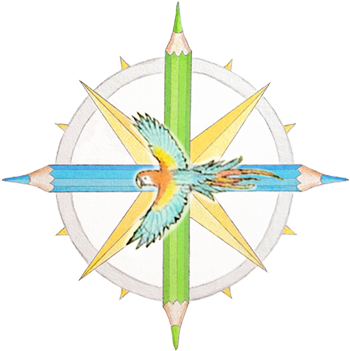
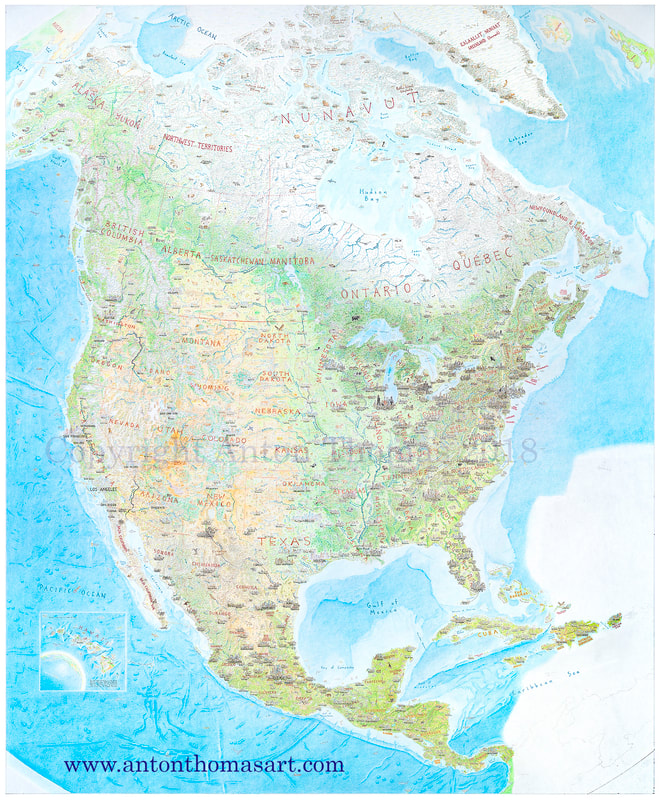
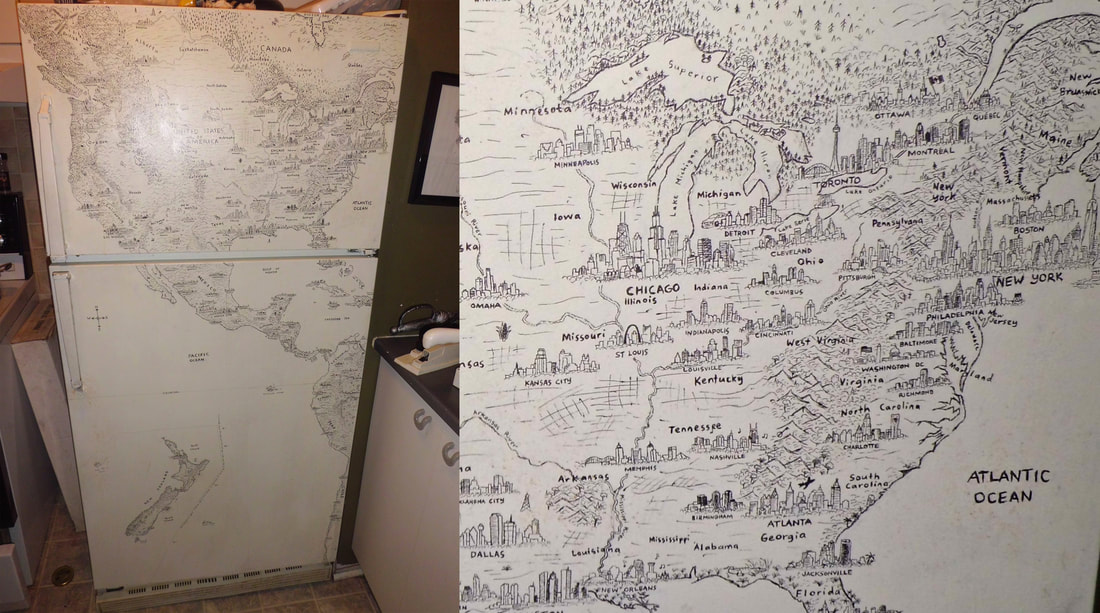
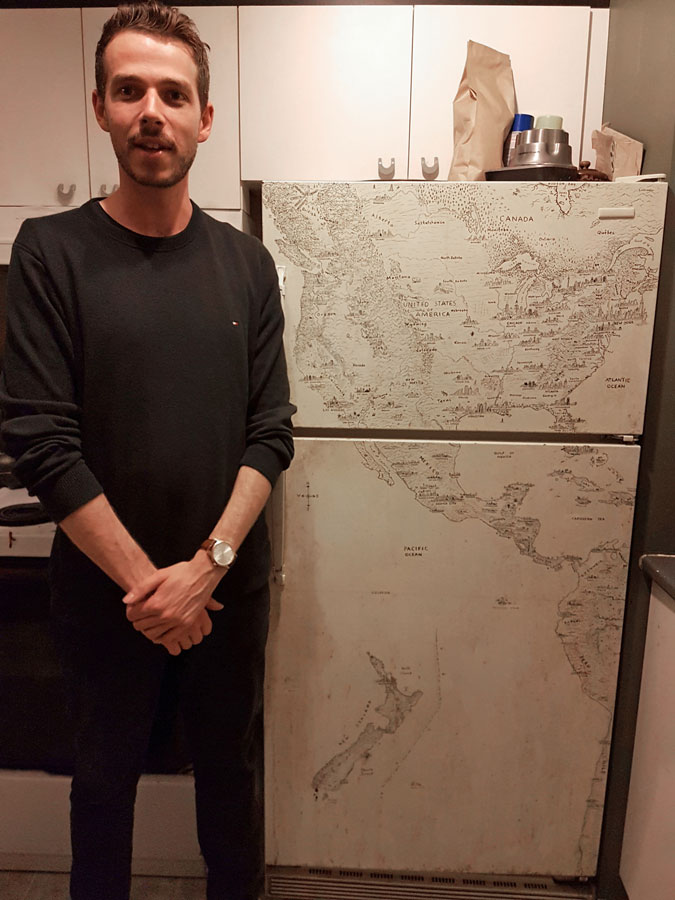
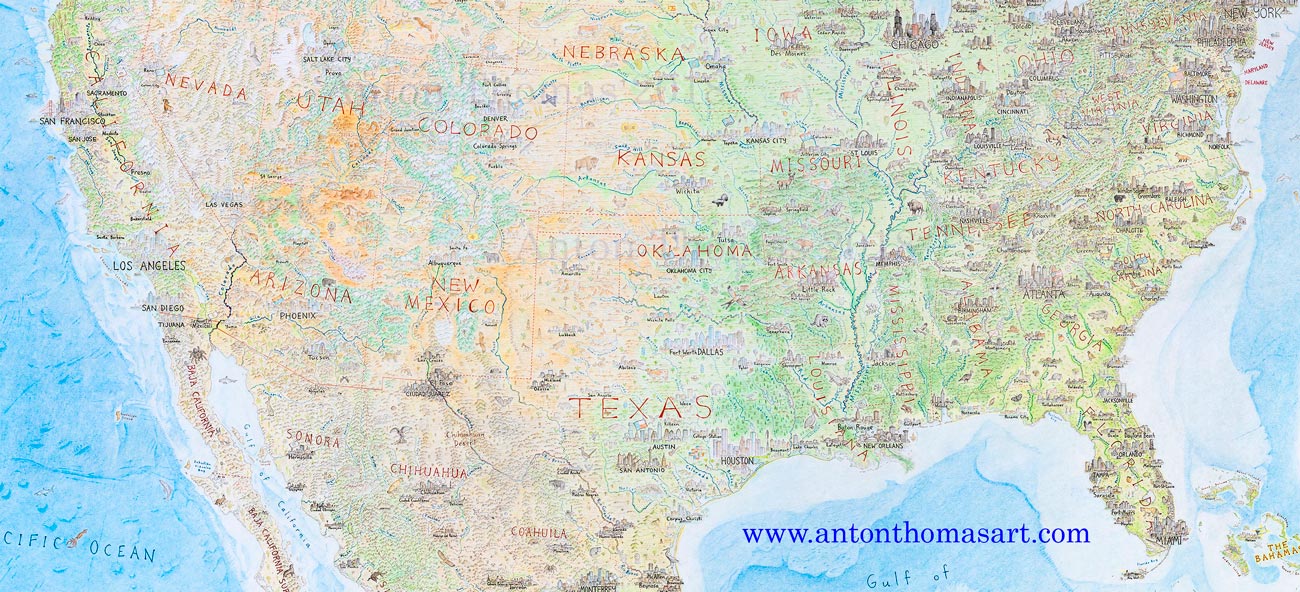
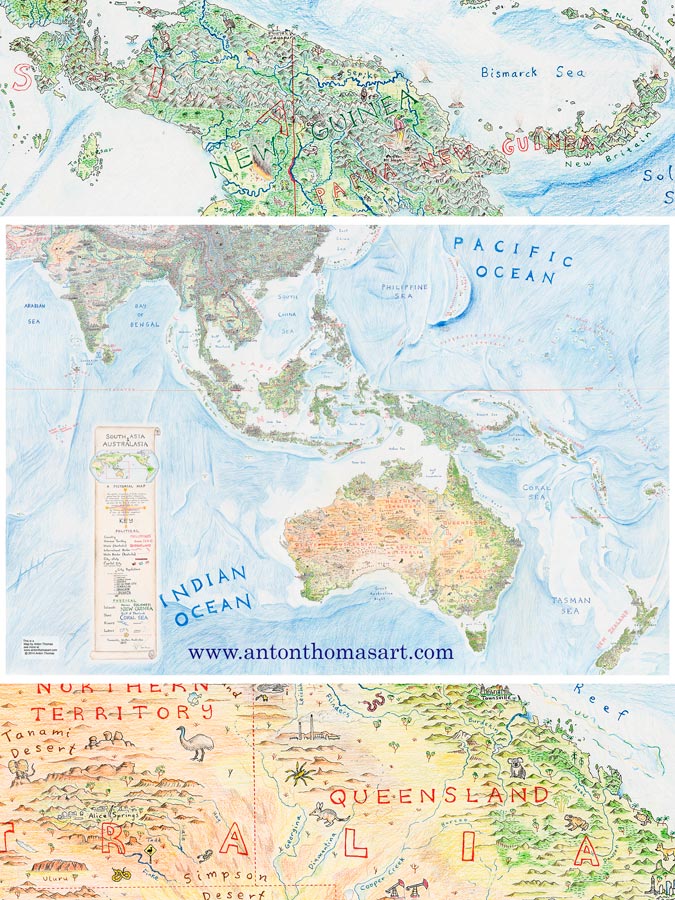
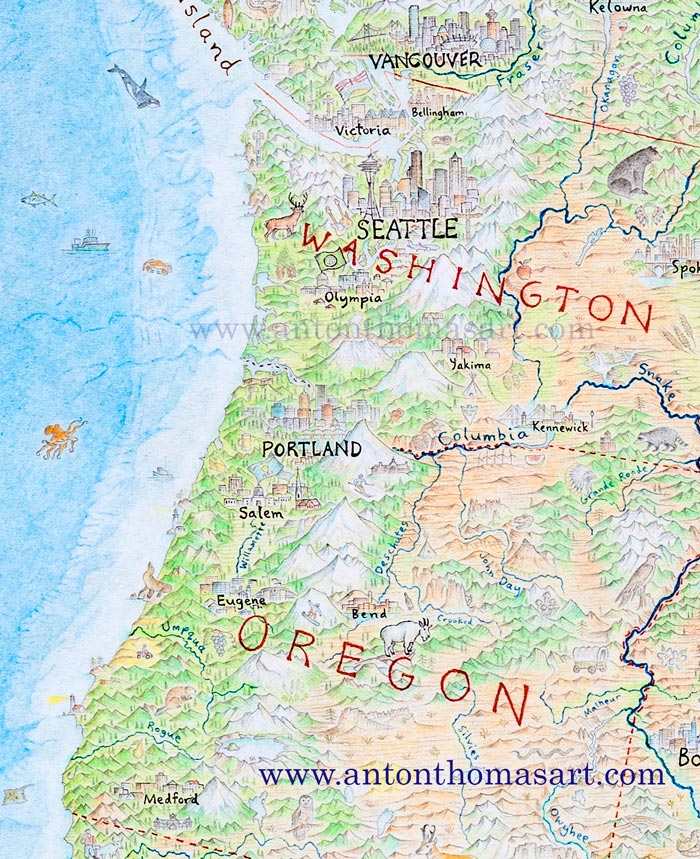
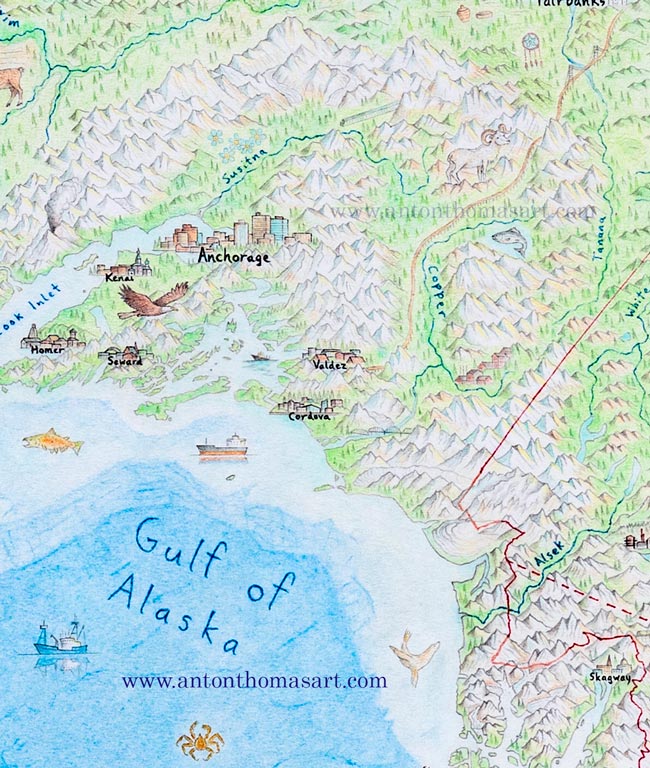
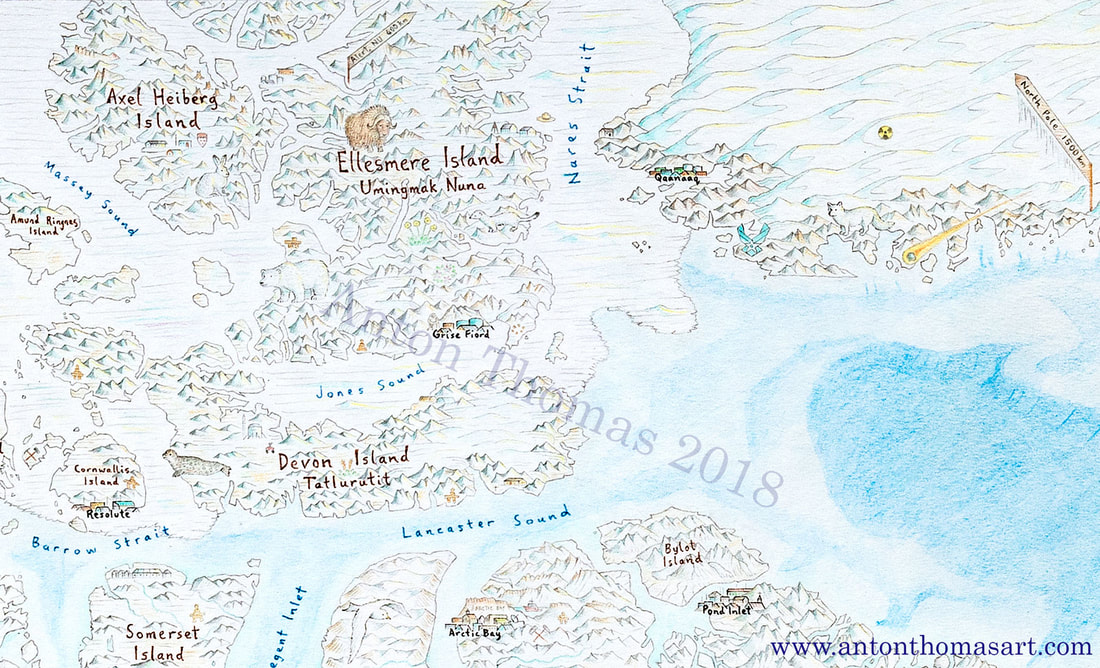
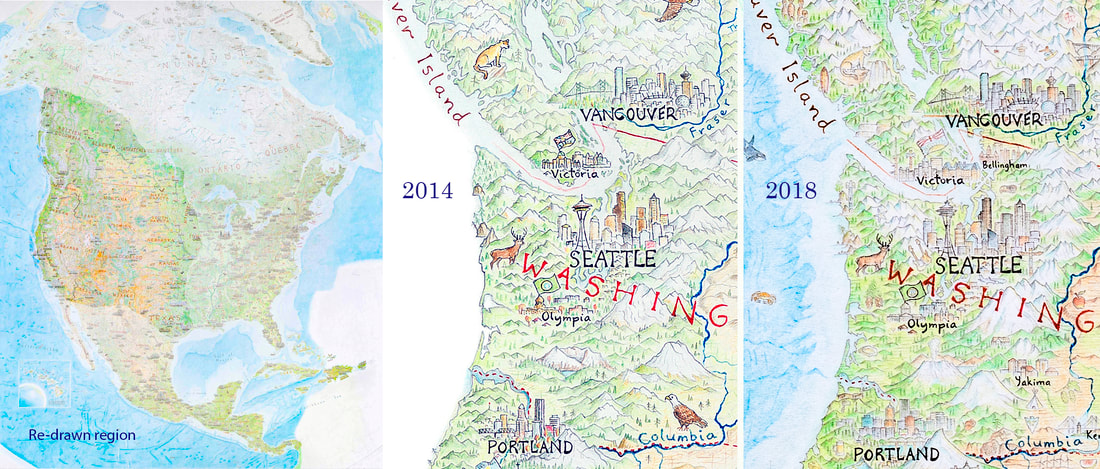
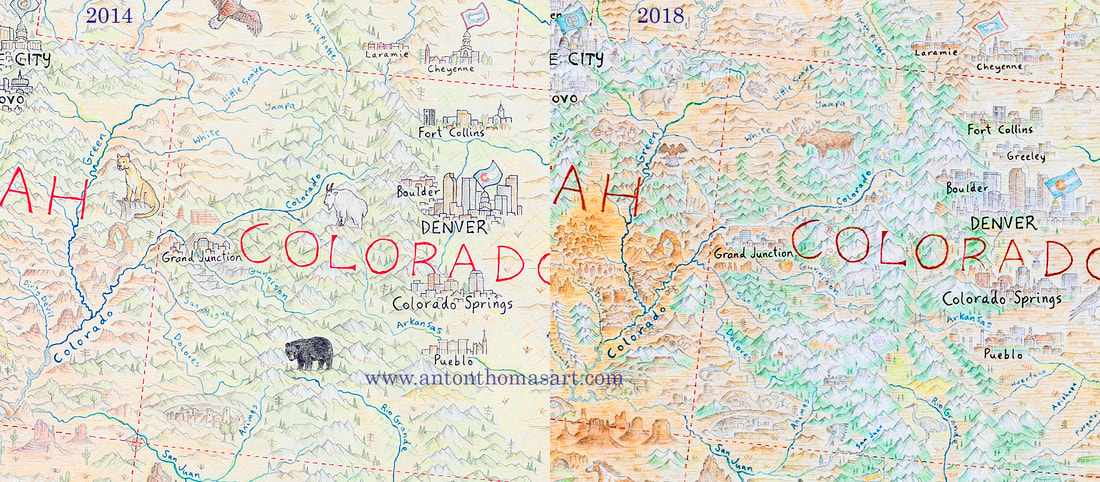
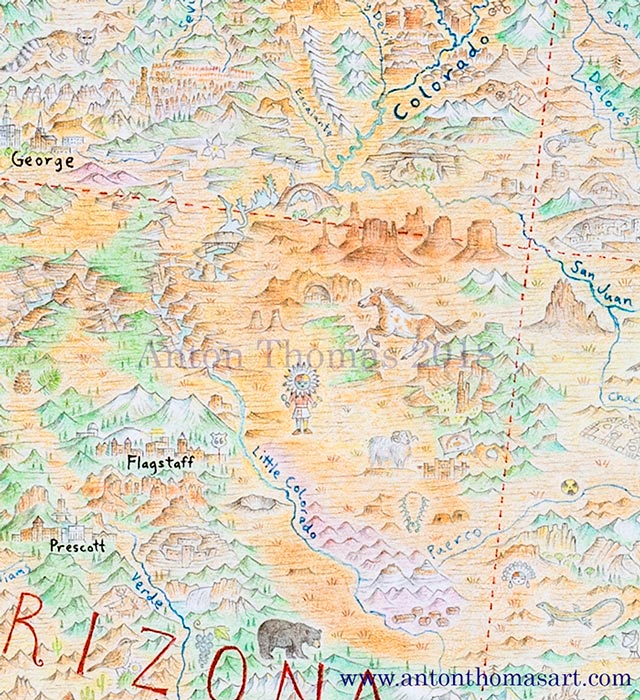
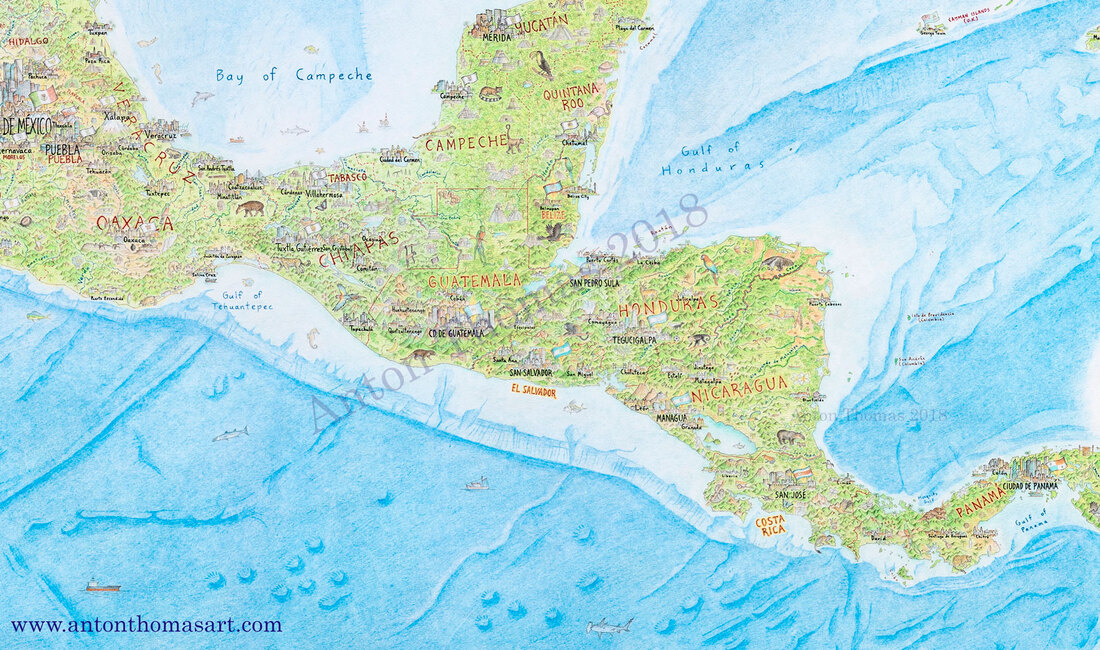
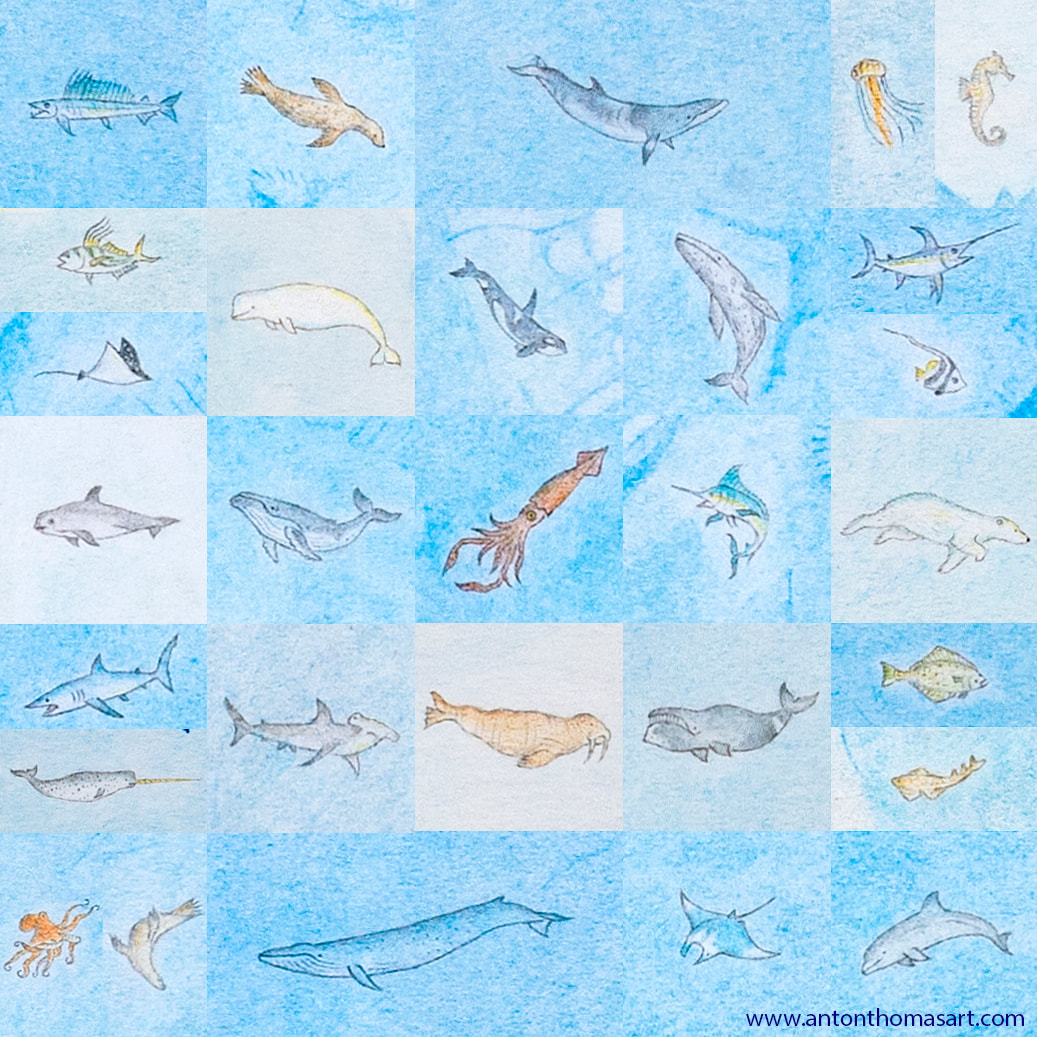
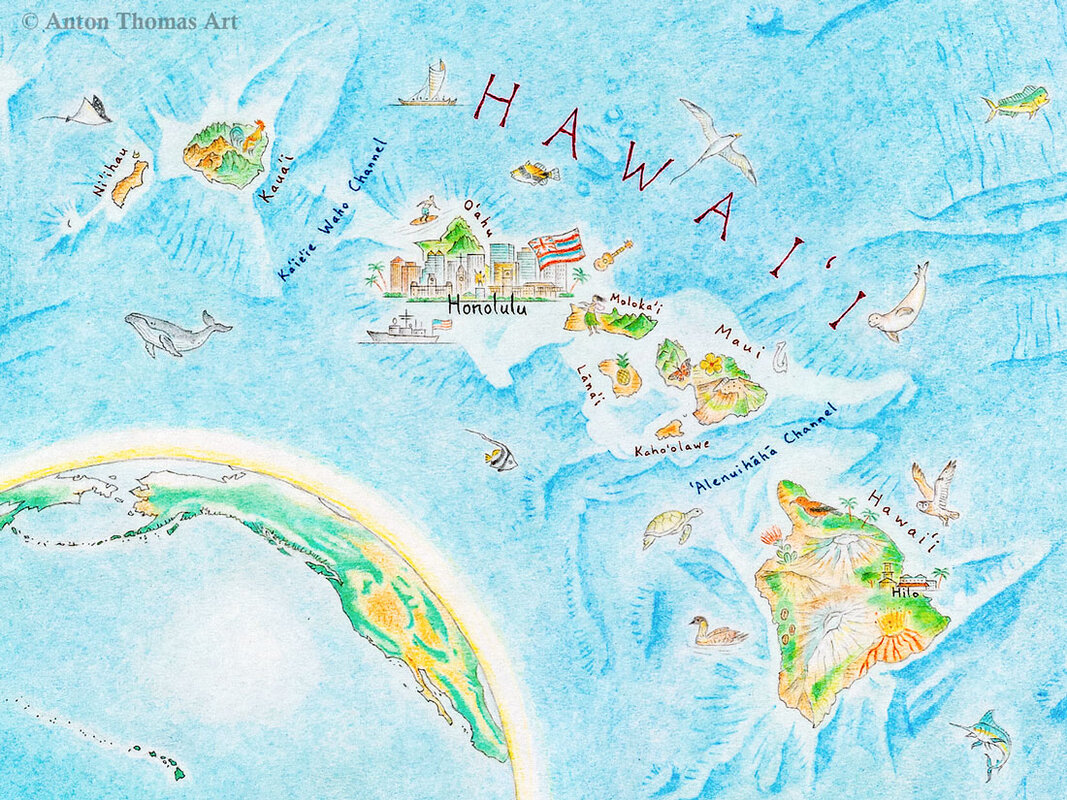
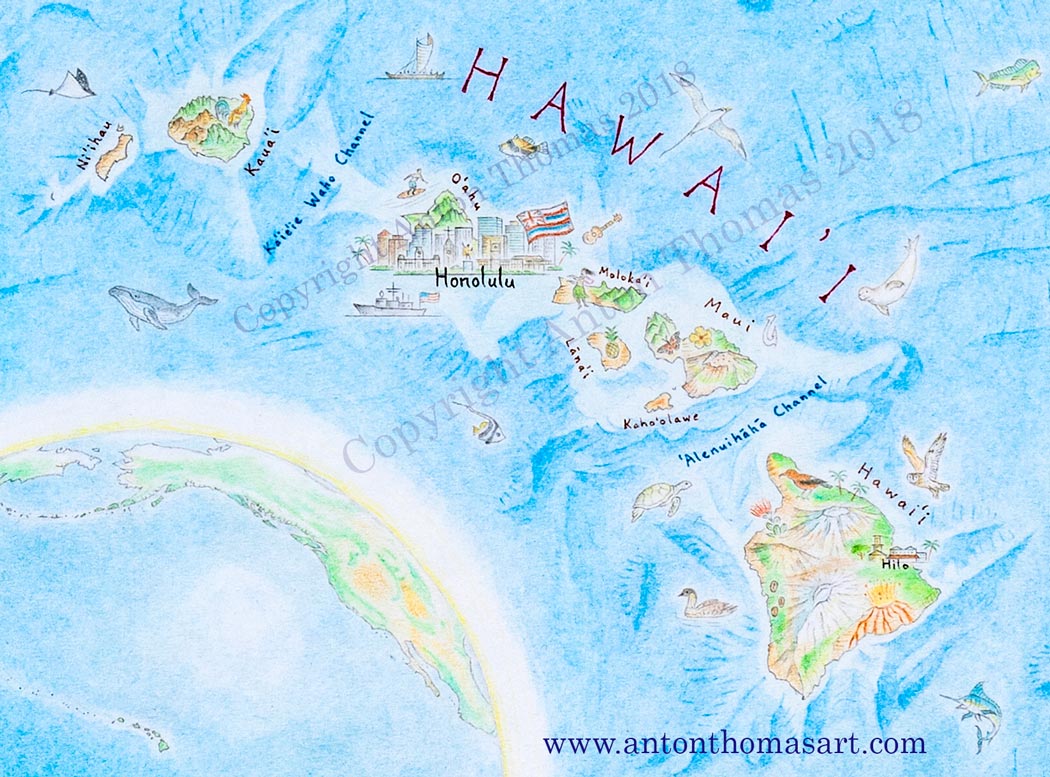

 RSS Feed
RSS Feed
